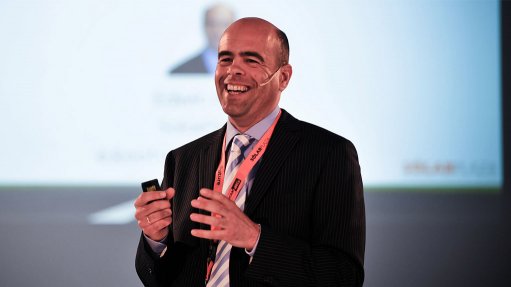
EDWIN KOOT South Africa is an example of a country that is correctly implementing a sustainable government policy on solar energy use
South Africa is currently one of the world's leading examples of sustainable government policy on solar power, says global solar energy conference organiser Solarplaza CEO Edwin Koot.
“The global photovoltaic (PV) industry has been turned upside down in the last 24 months, with former industry leaders losing massive market share. China has significantly increased its PV installed capacity, and South Africa is revealing itself as an example of a country that is correctly implementing a sustainable government policy on solar energy use,” he states.
Koot adds that Europe has suffered significantly, as some governments have withdrawn or taxed their solar energy incentive schemes.
“Spain, Germany, Belgium and Italy have all encountered turbulence and turnarounds in the last 12 months, while South Africa has shown commitment in setting up its solar industry and is currently moving into round four of its Renewable Energy Independent Power Producer Procurement Programme.
“South Africa has also maintained its incentive schemes, and is successfully getting projects off the ground.”
Further, Koot highlights that in the current challenging global economic climate Solarplaza has learnt that it is not all about size of the company, as several of the former industry leaders are now struggling, while some of the smaller players are performing well.
International nongovernmental environmental conservation organisation World Wide Fund for Nature South Africa (WWF-SA) Living Planet unit head Saliem Fakir points out that the South African Department of Energy in November, last year, released a revised Integrated Resource Plan (IRP).
“Because of the IRP’s preference for solar energy, I expect solar-driven energy solutions to become a stronger competing force in South African power markets, at the expense of wind energy. South Africa reaps high levels of direct solar radiation, which will boost progress towards efficient application of solar systems, and drive down costs,” he states.
Large corporates and the mining industry are now considering solar as a hedge against future rising tariffs, categorised by Koot as "asset management with a good return, since their investment could – in some cases – be paid back within five years”.
Further, Koots says that solar production costs have declined by about 60% since 2008, and may continue to further decline.
Fakir adds that WWF-SA believes that the declining costs of renewable-energy technologies and the inversely proportionally rising costs of conventional energy-winning methods, will reach parity in South Africa at some point in the future.
“Solarplaza has been witness to the immense positivity and growth in South Africa. There is high energy here and you can enter the market, even if there are no incentives from government. From what we have seen, it really can be one of the world's largest markets, as long as the government stays the course after the next election,” Koot concludes.